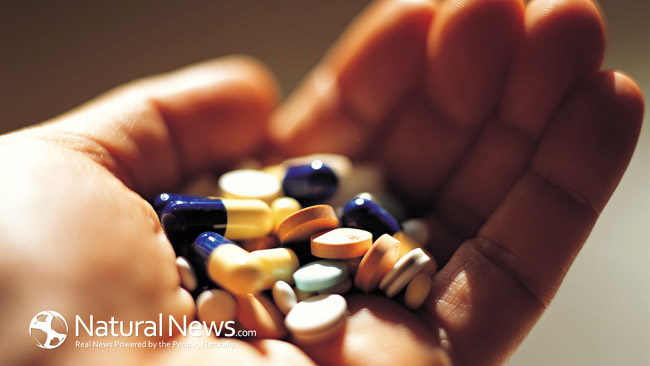I have to ask: Do you use corrosive carcinogenic compounds to cook your food? If you’re eating processed food-like-products you probably do. When the items you consume are processed with chemicals that have a mile long list of side effects and warnings, shouldn’t that raise an eyebrow?
“Precautions: Do not ingest. Do not breathe dust. If ingested, seek medical advice immediately and show the container or the label. Personal Protection: Safety glasses. Lab coat. Dust respirator. Be sure to use an approved/certified respirator or equivalent. Gloves.” Do these warnings appear on your food product container or packaging? No?
95% of the 3,000 + additives the Food and Drug Administration allow as GRAS are toxic, corrosive, cancerous chemicals. You ingest poison everyday without knowing it. Whether you may want to believe it, admit it, or deny it, it happens.
General research:
Magnesium Silicate
(Talc, Talcum powder)
This substance is generally recognized as safe when used 2.0% in table salt
Silicate – Any of numerous compounds containing Silicon
The substance is toxic to lungs. Repeated or prolonged exposure to the substance can produce target organs damage.
Uses:
- Rubber filler
- ceramics
- glass
- refractories
- absorbent for crude oil spills
- manufacture of permanently dry resins and resinous compositions
- paints
- varnishes, and paper (filler)
- animal and vegetable oils (bleaching agent)
- odor absorbent
- filter medium
- catalyst and catalyst carrier
- anticaking agent in foods
Talcum powder is made from talc, a mineral made up mainly of the elements magnesium, silicon, and oxygen. As a powder, it absorbs moisture well and helps cut down on friction, making it useful for keeping skin dry and helping to prevent rashes. It is widely used in cosmetic products such as baby powder and adult body and facial powders, as well as in a number of other consumer products.
Magnesium Silicate hollow spheres with large specific surface area showed availability for the removal of organic and heavy-metal ions efficiently from waste water. Importantly, the micro/Nanoscale Magnesium Silicate hollow spheres that had adsorbed organic pollutants could be regenerated by calcination and used repeatedly in pollutant removal.
Production:
Gels of Magnesium Hydroxide and of silica are produced separately, are washed, are combined and are redispersed in water to form a suspension. Lithium Hydroxide or Lithium Fluoride and Sodium Hydroxide are added to the suspension that is then treated hydrothermally
Presumably, it could be an eye, skin, and respiratory tract irritant from frictional action. Chronic exposure can lead to accumulation in the lungs, as in the pneumoconiosis called “Talcosis” and exposure to fibrous forms might result in pulmonary fibrosis.
ACUTE INHALATION: Acute aspiration of talc causes cough, dyspnea, tachypnea, sneezing, vomiting, cyanosis, and pulmonary edema which may be delayed up to several hours. Cardiorespiratory arrest may occur following severe aspiration.
CHRONIC INHALATION of industrial talc dusts or body talc produces talcosis due to talc, silica, and asbestos (talc pneumoconiosis) characterized by productive cough, dyspnea, rales, diminished breath sounds, limited chest expansion, interstitial fibrosis, and granulomas.
Acute Aspiration of talc causes cough, dyspnea, tachypnea, sneezing, vomiting, cyanosis, and pulmonary edema which may be delayed up to several hours. Asphyxia and cardiorespiratory arrest may occur following severe aspiration. CHRONIC INHALATION may cause talcosis (talc pneumoconiosis).
Talc was classified as pregnancy category B. Talc was fetotoxic
Talc is a powdered native, hydrous magnesium silicate sometimes containing a small portion of aluminum silicate. Talc can be contaminated with asbestos fibers, posing risks for respiratory toxicity and cancer. Studies by the National Toxicology Panel (NTP) demonstrated that cosmetic-grade talc free of asbestos is a form of magnesium silicate that also can be toxic and carcinogenic.
It has been suggested that talcum powder might cause cancer in the ovaries if the powder particles (applied to the genital area or on sanitary napkins, diaphragms, or condoms) were to travel through the vagina, uterus, and fallopian tubes to the ovary. Several studies in women have looked at the possible link between talcum powder and cancer of the ovary.
One recent study suggested genital talcum powder use may slightly increase the risk of endometrial (uterine) cancer in women who are past menopause, but further studies are needed to explore this possible link.
IARC (International Agency for Cancer Research) classifies talc that contains asbestos as “carcinogenic to humans”.
The NTP has not fully reviewed talc (with or without asbestos) as a possible carcinogen.
Precautions: Do not ingest. Do not breathe dust. If ingested, seek medical advice immediately and show the container or the label.
Personal Protection: Safety glasses. Lab coat. Dust respirator. Be sure to use an approved/certified respirator or equivalent. Gloves.
Other Regulations:
OSHA: Hazardous by definition of Hazard Communication Standard
EINECS: This product is on the European Inventory of Existing Commercial Chemical Substances.
References:
- http://www.law.cornell.edu/cfr/text/21/182.2437
- http://www.sciencelab.com/msds.php?msdsId=9924559
- http://science.naturalnews.com/2010/203463_Chemical_template_synthesis_of_micro_nanoscale_magnesium_silicate_hollow_spheres.html
- https://www.google.com/patents/WO2004000729A1?cl=en&dq=production+magnesium+silicate&hl=en&sa=X&ei=YHwfUuXzOMKosATgloDwDw&ved=0CDQQ6AEwAA
- http://www.naturalnews.com/032669_lithium_water_supply.html
- http://www.cancer.org/cancer/cancercauses/othercarcinogens/athome/talcum-powder-and-cancer
- http://toxnet.nlm.nih.gov/cgi-bin/sis/search/a?dbs+hsdb:@term+@DOCNO+5823
- http://www.ewg.org/skindeep/ingredient/706427/TALC/#
Legal G.R.A.S
http://www.law.cornell.edu/cfr/text/21/184.1
G.R.A.S. List
http://www.accessdata.fda.gov/scripts/fcn/fcnNavigation.cfm?rpt=eafusListing
Some extra reading material





